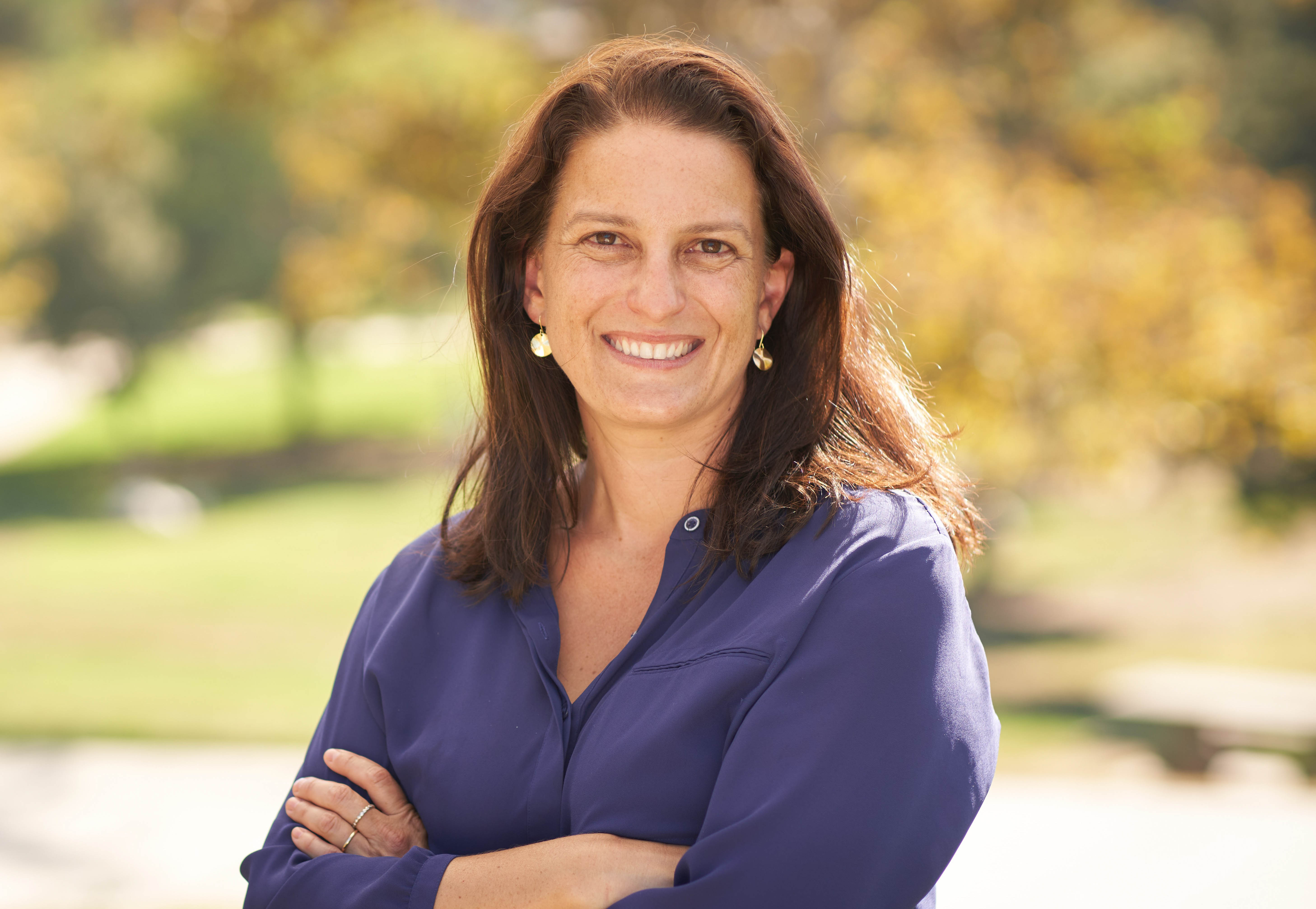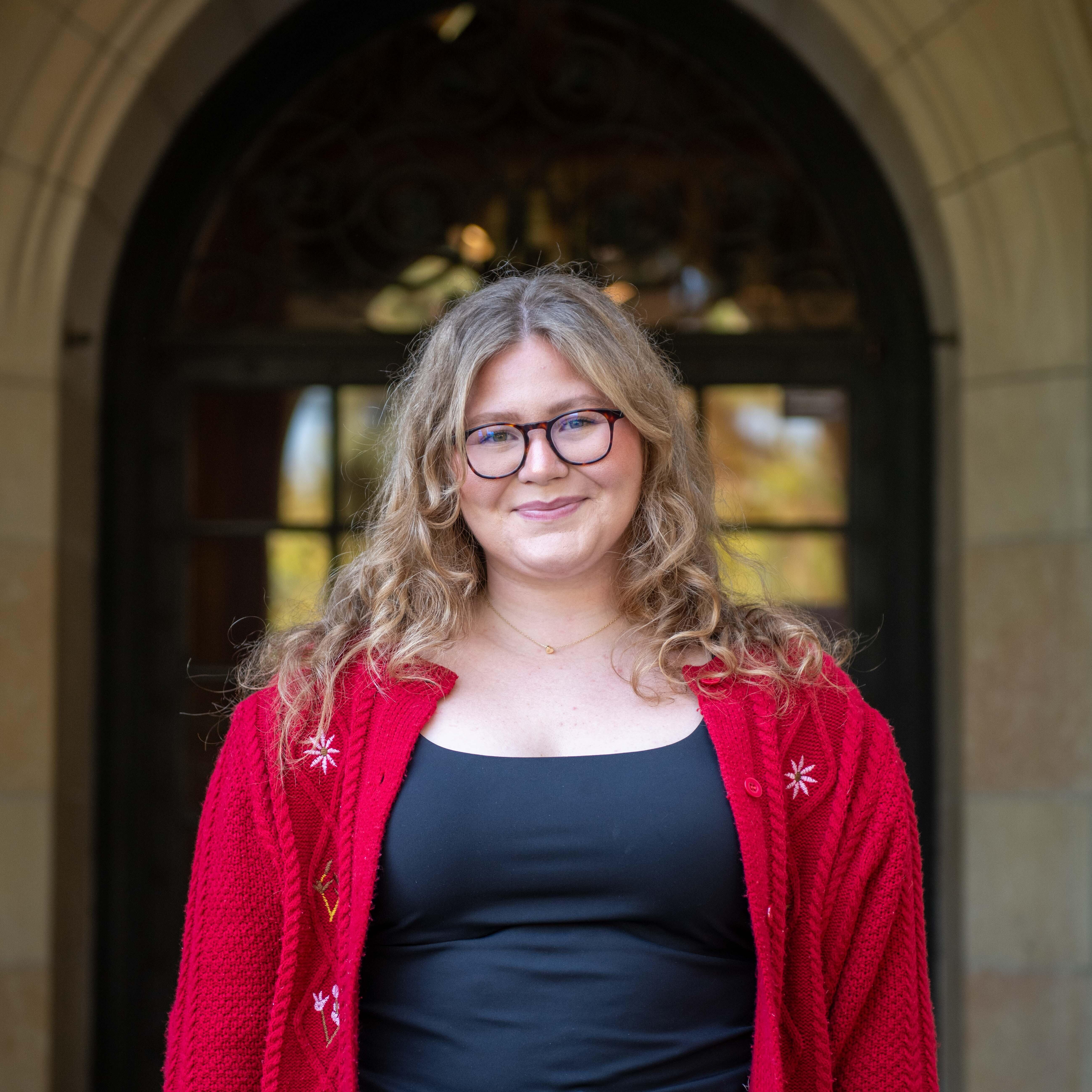Q&A: Councilmember Katy Yaroslavsky discusses past, present goals for Westwood

Pictured is Katy Yaroslavsky. The District 5 Los Angeles City Council member sat down the Daily Bruin to discuss changes coming to Westwood. (Courtesy of Councilwoman Yaroslavsky’s office)

By Sharla Steinman
Nov. 14, 2023 9:48 p.m.
This post was updated Nov. 15 at 12:25 a.m.
Katy Yaroslavsky, the District 5 Los Angeles City Council member, sat down with the Daily Bruin to discuss her achievements in the first year of her four-year term, as well as share insight on what Westwood can expect in the future.
This interview has been edited for length and clarity.
Daily Bruin: A year into your term, what goals do you have for Council District 5 during the rest of your term?
Katy Yaroslavsky: There’s really four buckets of work that we’re focused on. The first is around housing and homelessness and addressing the crisis, getting affordable and homeless housing built in all neighborhoods of the city faster. We also need middle income housing, and we need to be putting that housing near transit stations and job centers. That’s a huge priority.
The second is around building more livable communities – adding bus and bike infrastructure to make our streets safer, making our power grid more resilient and 100% renewable, and moving towards local water. Right now, most of our water comes from other places, and that’s problematic for a bunch of reasons.
The third priority is around increasing transparency and accountability at city hall. We’ve introduced a couple of motions that will help move us in that direction and make sure that we’re in compliance with the laws and following the rules and just sort of add accountability, but also resources for the council.
The fourth is about making LA a more welcoming and safe place for everybody – so really focused on hate crimes and hate incidents, making sure that we have a police department that’s responsive and funded to do the job that police officers went to the academy to do. We also have alternative crisis response, and there’s money in the budget this year to start to stand up an alternative crisis response program.
DB: The Midvale Avenue interim housing unit was just passed by the city council. What made Westwood ideal for the location? Are there any more plans to add similar housing?
KY: Before I took office, we started looking at a bunch of city-owned parcels because that’s the free land, and on the Westside, obviously, land is expensive. We looked at more than 100 properties for potentially putting in interim housing, and it’s really important that we do this in the district, right?
Of the 17,000 interim housing units across the city of LA, only one-half of 1% are located in CD 5, so 99 units total, and none of those are for general-population adults. We have senior housing. We have family housing. We have senior veteran housing. But if you’re an adult between 18 and 55, we don’t have a bed for you. When we want to resolve encampments and move people inside, it’s really hard. When we were looking at selecting the location and why Midvale, we looked at a bunch of different criteria, including whether the property was city-owned, which obviously reduced costs. We looked at the proximity to public transportation and services, the financial feasibility, how big the lot was, how many of these units can we put on, the health impacts, the site suitability, proximity to schools, things like that.
We’re also studying a proposal that came from the community close to Midvale, who wanted us to do a different site. They proposed Cotner (Cotner Avenue), which is where the RV encampment is right now. It just so happens that the RVs are in front of three city-owned parcels on Cotner. We’re looking at the feasibility of temporarily shutting down a portion of Cotner and swapping out the RVs that are there now, which are falling apart and leaking and problematic for a bunch of different reasons, with city-owned RVs that we have from COVID. And then adding wraparound services, three hot meals a day, bathrooms, gathering things like security and really turning it into an interim site. So between those two, we should … double the number of interim beds we have in the district. It’s a good start.
I think we also need to be focused on permanent supportive housing. There’s a pinch point right now because you’ve got people in interim who can’t exit into permanent (housing) because there isn’t enough permanent, so we need all of it.
DB: What is being done on the city level to make Westwood a little bit more affordable for students?
KY: Well, I was a UCLA student at the law school 20 years ago, and I’m still paying off my law school loans. It’s not because of tuition, which at that time was still relatively reasonable. It’s because of rent. I lived in Westwood. I paid exorbitant amounts of rent for the privilege of being able to schlep myself and walk up to school every day. I think it’s an age-old problem, but your point is well taken.
It’s a real problem. The Westwood area is one of the most expensive zip codes to rent in the entire country. It’s a housing issue. It’s not only a quantity issue, which it absolutely is. We need more of it, but we also need more of it at prices that people can afford. So we need market rate and we need affordable (housing). The council recently passed a motion that I brought that codified Mayor Bass’ Executive Directive 1, which makes it much easier and faster to build affordable housing. Building more is certainly one piece. The other is that we need to make it easier for people to get to campus, because not everybody will be able to afford to live in Westwood, even if prices do come down. They may choose to live in another part of the city, so if you’re a student at UCLA without a car right now, you have very few choices for getting there safely.
We’re going to have the Metro D line coming in the next couple of years, and there’s going to be a stop at UCLA. The Sepulveda line needs to have a stop at UCLA, so folks are going to have much more freedom in terms of where they live. That should help with affordability and the ability for students who aren’t wealthy to attend UCLA and not leave with mountains of debt. I think it’s important that students have the choice of living in Westwood and that we have affordable options there, and that’s something that I’m committed to working with UCLA on.
It’s a private sector. We need to make it easier for people to build more in places like Westwood where there are a lot of jobs, there are a lot of students, there are a lot of people who want to live there. We’re working on it.
DB: Are there any updates on the Sepulveda Transit Corridor? When can students expect to be able to use the corridor?
KY: The project is in the environmental review stage. It’s the second of five major phases in the project development process. And once the Environmental Impact Report is completed, Metro is going to move to the design and construction and operation phases. Right now, the completion date is 2033 to 2035. It will depend in part on which option is selected.
There are a couple different alignments and technologies that are being studied and different variations of each. I’m going to remain neutral on it until the EIR is done. I think the whole point of the EIR and having these different options reviewed through a full EIR process … gives us a chance to see what comes back. How long are they going to take? How much are they going to cost? What’s the environmental impact of each? Regardless of whichever one is chosen, it’s critical that there’ll be a station at UCLA and that getting there is seamless. It should be quick. It should be efficient. It should get students where they need to go, which is campus. Any of the options that don’t do that are unacceptable to me.
DB: CD 5 has one of the biggest Jewish populations across LA. What has been the city district response to the conflict in Israel and Palestine? Do you have a message to the Jewish and Muslim communities in Westwood and on campus?
KY: Thank you for that question. Look, I think the first thing to do is acknowledge that for so many people, Jews and non-Jews alike, (and) Muslims, the last couple of weeks have been really difficult. That’s true for me and my family, other Jewish and Muslim families, and people who have family or friends that are in harm’s way in the Middle East.
In my role as a council member, I’ve been mostly focused on preventing violence in the Middle East from transferring here to LA and making sure that it doesn’t spill over here. We’ve been working closely with LAPD and private security companies to make sure houses of worship are protected and that people walking to and from temples and mosques are safe.
As a member of the city’s budget and finance committee, I was able to secure $150,000 to expand the Jewish Federation’s community security initiative, which works with Jewish institutions across the region to harden security protocols and infrastructure. It funds things like security guards, security, cameras, metal detectors, fencing (and) things like that. It makes sure we have the infrastructure in place to deter antisemitic attacks before they’re committed. It’s our job to keep people safe and do everything in our power to do that. That’s what I’ve mostly been focused on, but it’s been a very challenging month for a lot of people in our community who have close ties to Israel. If you’re Jewish, or you have family in the region, it’s very personal.
DB: What changes can we expect to see in our district within the next year?
KY: One thing that I think is of note for the UCLA community is that we’re working to bring a protected bike lane to Westwood Boulevard that we anticipate will connect campus with the Expo Line. I was able to secure some funding in this year’s budget to begin the feasibility study on that, and we’re hoping to break ground by the end of next year or the beginning of 2025, so that’s exciting. A lot of students, faculty (and) staff ride their bikes or would like to ride their bikes, and many live in Palms or sort of south of campus, so there’s no safe way to get up to campus right now, and I heard that a lot on the campaign trail.
So that’s a priority for us, and working with residents, constituents, students, faculty, business owners, to make sure that we do it in a way that mitigates any negative impacts associated with that. It’s really important that we make it easy for people to get to campus safely.
We’re also working on getting the Midvale site open and making sure that we operate it in a way that’s really responsive and responsible to the community. Also, just a bunch of homeless prevention efforts as the United to House Los Angeles money becomes available. We’re really going to be focused on keeping people in their houses rather than waiting until people become homeless before we connect them to housing services. There’s going to be a lot of programming of that ULA money around homelessness prevention, which hopefully will result in fewer people falling into homelessness.

